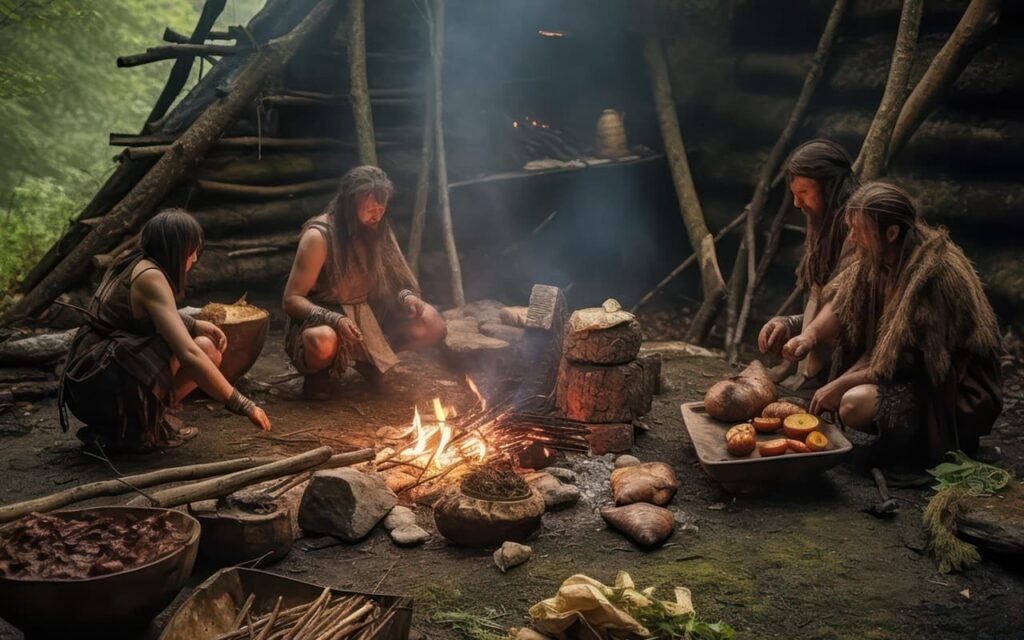The first people arrived in Ireland about 9000 years ago (around 7000 BC). We now call them Stone Age people because they used stone tools for farming and hunting. We know about these first settlers in Ireland because many of their tools and weapons have survived and have been found by archaeologists.
These early settlers in Ireland made weapons and tools from a sharp stone called flint, especially axe points. Initially, they lived mostly along the coast of Ireland or near rivers because they were hunters. They mainly ate berries, fruits, wild animals and roamed from place to place. Around 3500 BC, Stone Age people began to cut down forests to create farmland.
The Stone Age lasted a very long time and many changes took place. So we call Stone Age people by different names depending on when they lived during this long period of time. People who lived at the beginning of this time were known as Early Stone Age people. People in the middle of this period were known as Middle Stone Age people or Mesolithic people. People at the end of this period became known as New Stone Age people or Neolithic people.
Late Stone Age people or Neolithic people in Ireland were farmers. This late Stone Age period falls between about 4000 BC and 2000 BC, which means that the first farmers lived in Ireland about six thousand years ago. These peasants knew how to cultivate the land and raise cattle.
We know that the Late Stone Age people had a lot of respect for their dead because they built large stone tombs and monuments from about 4000 BC. Some of these tombs are very large and are called megalithic tombs or dolmens. Many of them can still be seen in Ireland, for example, at Glencolmcille in Co. Donegal. One well known dolmen in County Clare is called Poulnabrone. It was built around 2500 BC and was found to contain the remains of about seventeen adults and sixteen children. Stone Age peasants often decorated stones on their graves. An example of this can be seen in the large tomb at Newgrange.
